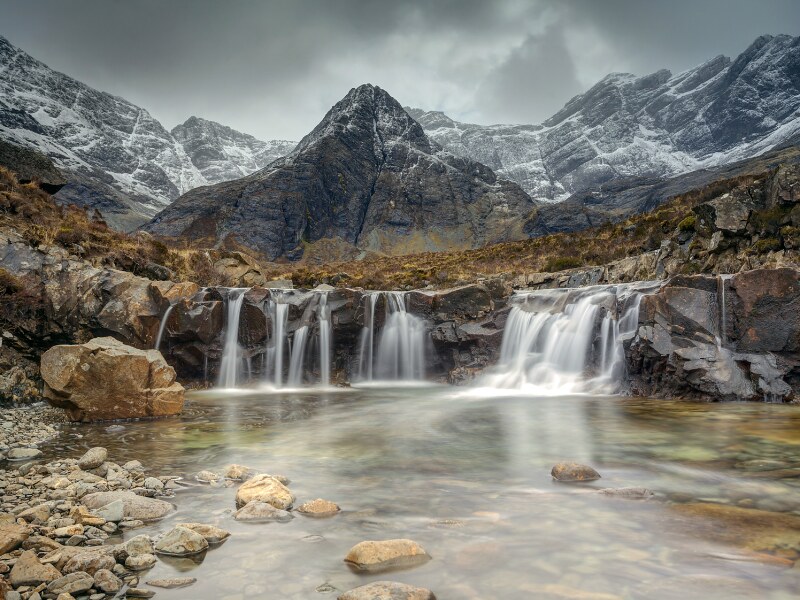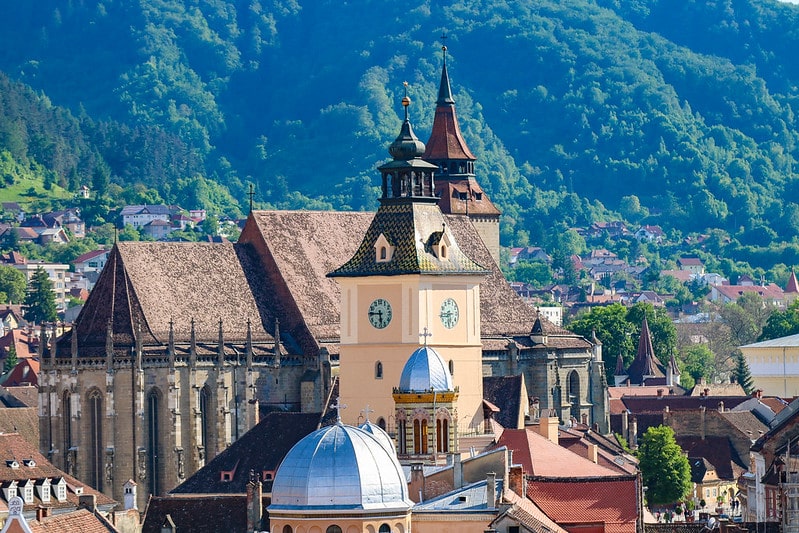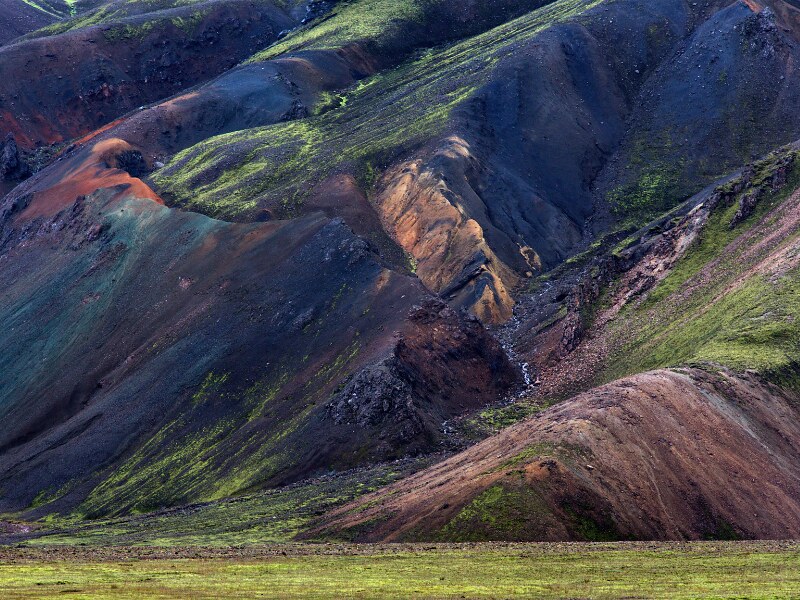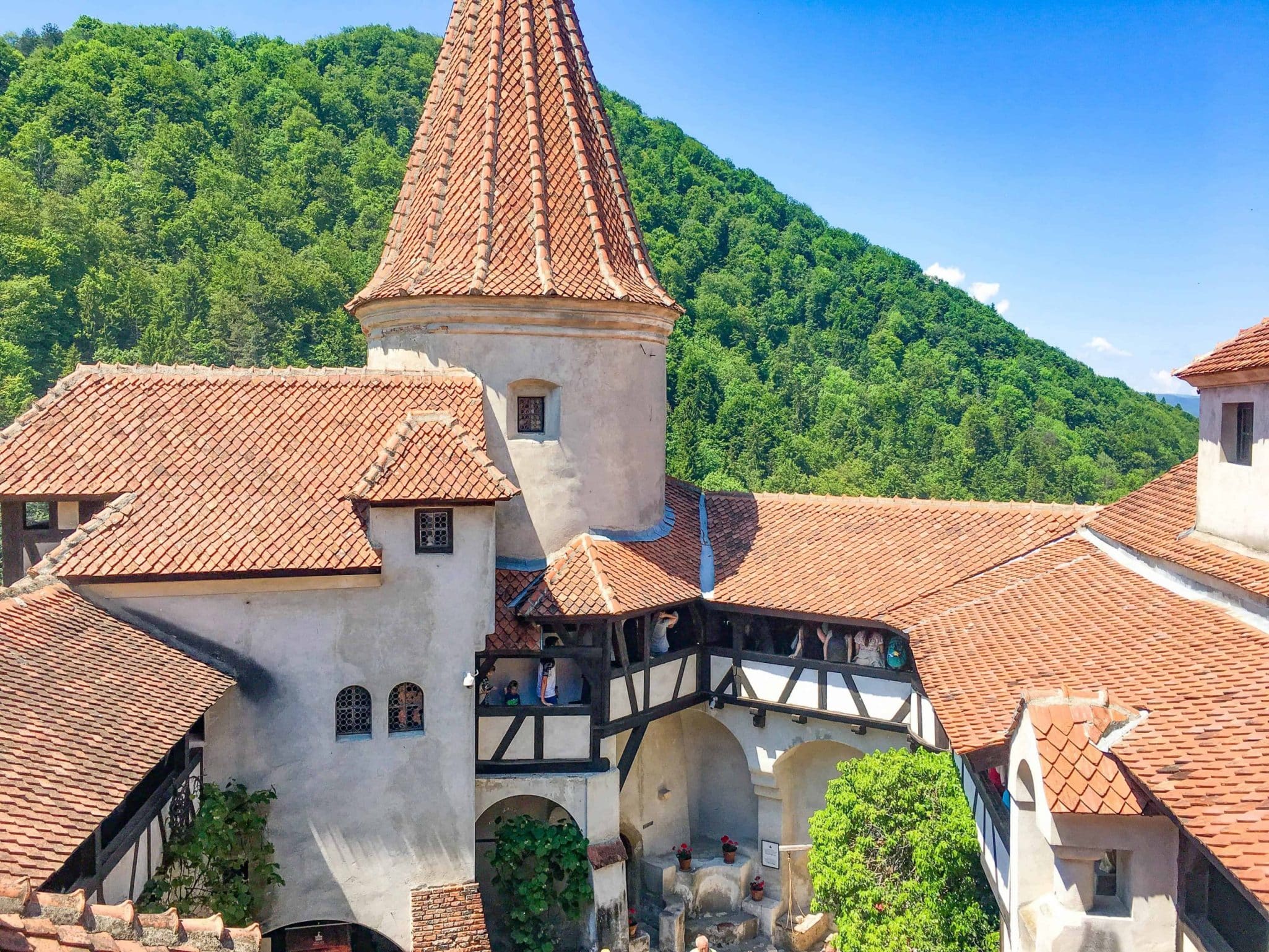18 fascinating facts about Loch Ness and its monster

Are you looking for unique facts about Loch Ness and its famous lake monster Nessie?
In this post, I’ve gathered the most fascinating Loch Ness facts that you can learn and share with your friends. You can also find the most asked questions about Nessie’s existence at the end of the post.
Ready to get to know this famous loch a wee bit better?
Let’s go, monster hunters!
❄️ Read next: 10 magical things to do in Loch Ness in winter
This post contains referral links for products I love. Adventurous Miriam earns a small commission at no extra cost to you if you purchase through my links. I appreciate your support ♡ Learn more
Loch Ness map
First of all, let’s take a look at where Loch Ness is located and what it looks like. This is Loch Ness below. You can zoom in by using the + and – sign in the right corner.
Fort Augustus (at the bottom) is the gateway to Loch Ness. If you want to visit Loch Ness, this is where you should go first.
You can also find Loch Ness on Google Earth.
loch ness monster facts
🦕 Facts about Loch Ness and Nessie
1. Loch Ness is deeper than the Great Pyramid of Giza is tall
Loch Ness is 36 km long, 2,7 km wide and 226 meter at its deepest point – that’s more than the height of the Great Pyramid of Giza (146 meters high), people. It’s basically the perfect place for a prehistoric monster.
2. Loch Ness is the largest lake in the UK
Loch Ness has the largest body of water in the UK because it’s so deep. It holds more water than all other rivers and lakes of England, Wales and Scotland.
It’s the second largest lake by surface area in all of Scotland – second only to Loch Lomond at 56 square km (22 square miles).
🤓 Loch is the Gaelic word for lake, and Scotland has many, MANY freshwater lakes – 31,460 to be exact.
Favourite facts about Nessie
3. Nessie was first spotted in 565 by a monk
Nessie is one of the most famous monsters in the world, and she was first spotted in 565 by a monk.
In 565, an Irish monk by the name of St. Columba and his companions encountered local residents burying a man who had been mauled by a “water beast” while swimming in the River Ness.
The pious St Columba made the sign of the cross and ordered the creature away, which it did as if pulled by invisible ropes. Skeptics have questioned the source, noting that water-beast stories like that were common in the Middle Ages, but some believers view it as evidence for an ancient creature living in Loch Ness.
4. A hoax made Nessie famous
Nessie has been part of Scottish folklore for 1500 years. In history, many eye-witnesses have come forward with stories and photos depicting the monster, but one stood out.
In 1934, “The Surgeon’s photo” by a London surgeon named R. Kenneth Wilson showing a mysterious head and neck brought Nessie international fame. But it was revealed to be hoax decades later.
“The Surgeon’s photograph” was the most iconic photo in the history of Loch Ness and maybe one of the best hoaxes of our time.

5. You can use Google Maps to look for Nessie
Did you know that you can use Google Maps to look for Nessie? Why not give it a go and see what surprises you find in the waters of Loch Ness?
6. More than 4,000+ eye-witness accounts
More than 4,000+ reported witnesses claim to have seen Nessie over the years. The monster is still spotted today, mostly by locals.
What’s really interesting about this is that many of the witnesses were sober, rational people: scientists and priests, policemen and lawyers, even a Nobel Prize winner: Dr. Richard Synge.
7. A British circus offered a £20,000 prize
In 1933, a British circus offered a £20,000 prize for anyone who could capture the water beast in Loch Ness.
Nessie hunters used every imaginable strategy from explosives to sonar to try and lure out the creature but none of them were successful, and the £20,000 remains unclaimed to this day.
8. A teenager was the first to swim the length of Loch Ness
The first person recorded to swim the length of Loch Ness was a British teenager. Her name is Brenda Sherratt, and in 1966 she swam the length of Loch Ness in 31 hours and 41 minutes!
*She encountered no unusual creatures along the way.
Brenda Sherratt’s is super-cool because:
- She was just a teenager
- The temperature of Loch Ness is usually around 5 to 10 degrees Celsius. You can get cold water shock or hypothermia by swimming in the lake.
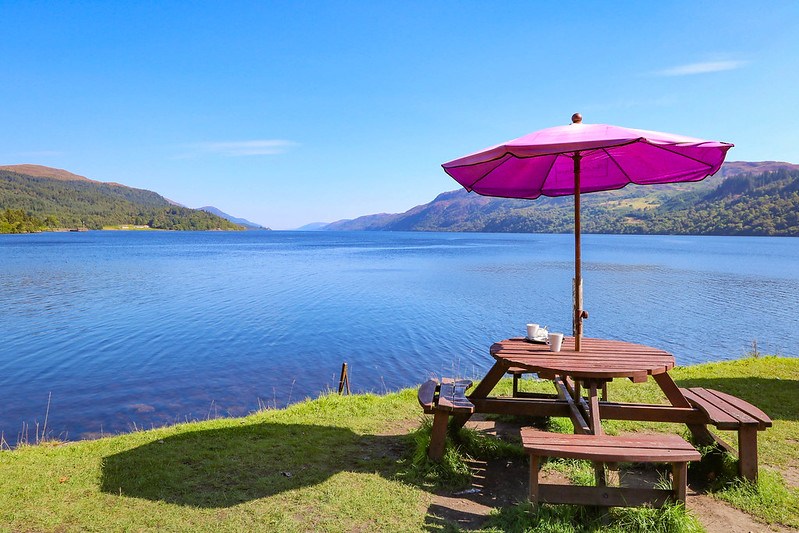
If you have a death wish and you know it, jump right in!
The loch ness monster facts
9. Nessie is described as a large creature with humps
Nessie has been described as a monster fish, a sea serpent and a dragon, until it became known as the Loch Ness Monster named Nessie.
Most of the eye-witnesses have reported seeing a large creature with humps. Others saw a long neck.
10. Nessie-fans believe she is a Plesiosaurus
There are hardcore Nessie-fans who suggest that she is a Plesiosaurus; a marine dinosaur that lived millions of years ago.
Scientists claim though that it’s unlikely the monster is a plesiosaur since this species vanished from fossil records 66 million years ago. Also a plesiosaur wouldn’t be able to survive in Loch Ness because it’s simply too small.
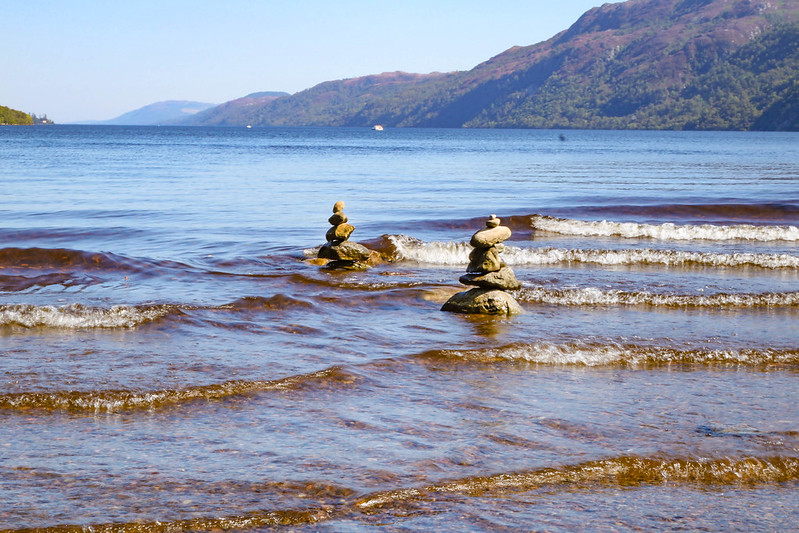
11. You can see Loch Ness from space
One of the coolest facts about Loch Ness is that you can actually see Loch Ness from space!
Loch Ness is one of four lakes located in the Great Glen fault line, a stunning valley formed by glaciers during the Ice Age (over 430 million years ago)!
Facts about the loch ness monster
12. Nessie-sightings might actually be earthquakes
Now, let’s get a little nerdy, shall we? 🤓
Since Loch Ness lies on the Great Glen fault line, it has experienced minor earthquakes since ancient times, usually registering as magnitude 3 or 4. During periods of higher seismic activities, many people have reported seeing something strange on the water.
Some scientists have suggested that in reality, people have not seen a strange creature but instead the effects of the earthquakes on the water.
13. The water is pitch black
Make no mistake.
The freshwater loch might look clear and inviting, but the blue surface is just a cover for the cold, deep and very murky water below.
The water in Loch Ness is so dark that it absorbs almost all light, making visibility under water extremely low.
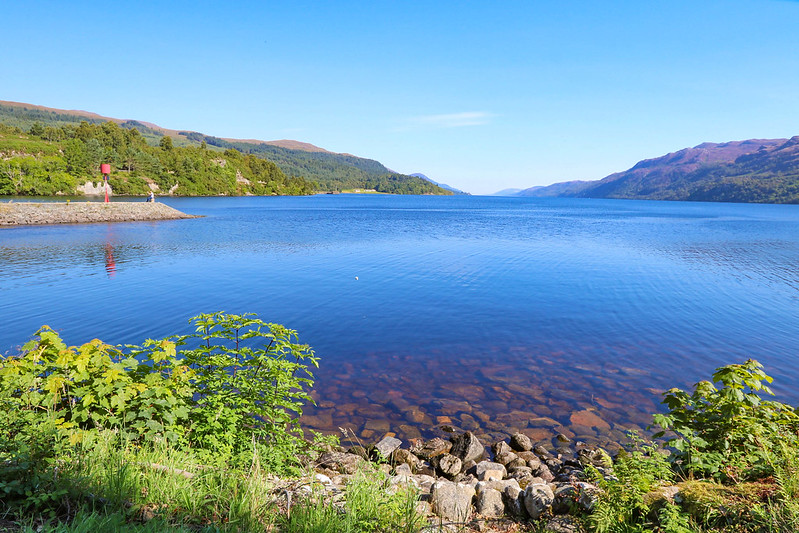
14. Nessie brings in nearly $54 million per year
According to research, the Loch Ness Monster contributes approximately £41 million to the Scottish economy each year (almost $54 million USD).
Around 400,000 people visit the beautiful scenery around Loch Ness each year, and even without the legendary monster, Loch Ness itself is a top location.

15. You can take a sonar boat tour
That’s right.
Monster watchers can take a boat trip on Loch Ness. Tour operators use acoustic echo-sounders to locate fish and other objects in the loch, while looking out for any possible sightings of the Loch Ness Monster.
16. Loch Ness never freezes
It is in fact so deep, that Loch Ness never freezes over, even in the harshest of Scottish winters. The reason for this is that the water cooled from the air will sink and be replaced by warmer water below it.
17. Loch Ness only has one island
Loch Ness has an island called Cherry Island. This small, rocky island lies in the middle of the loch, just south-east of Invermoriston.
It is believed to have been formed from glaciers or volcanic activity. Cherry Island is the only real “island” on Loch Ness and is home to birds and other wildlife.

18. Loch Ness has its own tartan
Did you know that Loch Ness has two tartans registered with the Scottish Register of Tartans?
An original brown and red design was spotted in an Inverness shop in 1983, while a modern ‘fashion tartan’ with blue accents and red highlights is available exclusively through Harris Tweed on the Isle of Skye.
🙋 FAQ
Is Nessie real? Let’s talk facts
Scientists are still finding new species of underwater life, and eight large marine species have been discovered in the past 20 years. Some of these creatures stay close to the bottom or hide in caves so they’re rarely seen by humans.
Now, stay with me here.
If we haven’t accounted for all living species on earth and below the sea, is it then impossible to imagine that something lives in Loch Ness?
Scientifically, you can’t rule it out.
Another interesting fact is that since 1994 when the Surgeon’s photo was revealed as fake, there has been fewer sightings of Nessie every year. Full-time monster hunter Gary Campbell has been keeping records of Nessie sightings for the past 17 years and has put together a list of sightings that goes back some 1,500 years.
According to his list, 17 sightings were reported in 1996, another 11 in 1997, 10 in 1998 and then it’s slowly dwindling. The number of sightings has been reducing since 2000, and in 2013 no Nessie report was registered in 18 months. It was the first time in many years that Nessie wasn’t seen at all.
Do those numbers represent a lack of interest in Nessie? Or is the sea-monster, even if it existed, no longer there?
No one can say for sure. But fear not, monster lovers, if history is any indication, there will be more Nessie sightings in the years to come.
Is it true that the Loch Ness monster may have been found?
No. People have been seeing things in the loch for 1,500 years, but Nessie has never been found.
What would they do with Nessie if they actually found her at Loch Ness?
Nessie would be offered protection if found. The Scottish government has a plan prepared to offer protection to new species found in Loch Ness, including a monster.
According to the plan, a DNA sample will be taken from any new creature, and then it will be released back into the loch.
What are some recent discoveries made about Loch Ness?
These are some of the most recent findings that might excite Nessie fans:
- Nessie might be actually be a descendant of the plesiosaur
- Nessie might have moved away
- The Loch Ness Monster is not a “large eel,” according to experts
Which is more plausible to exist, the Loch Ness Monster or Bigfoot?
Bigfoot is more likely to exist and here’s why:
The chances of plesiosaurs surviving in a relatively small ecosystem like Loch Ness are small, and so far no one has found evidence by submersibles or sonar.
Bigfoot, on the other hand, is described as a large ape-like creature. Apes could potentially survive in the deep woods, similar to bears, although there hasn’t been physical evidence of Bigfoot’s existence either.
Where is Loch Ness located?
Loch Ness is located in the Scottish Highlands, in the Great Glen area of Scotland. It is often referred to as the home of the legendary “Loch Ness Monster.” Its depths are an estimated 226 metres!
For how long has the legend of the Loch Ness Monster existed?
People have seen things in Loch Ness since the 6th century. In 1934, a famous photograph taken by Dr. Robert Kenneth Wilson became known as the “Surgeon’s Photo”.
This photograph turned out to be a hoax, but it made Nessie world-known.
Can you swim in Loch Ness?
Swimming in Loch Ness is not recommended because it’s too cold and deep.
The surface may be warm, but the temperature drops drastically below, which can lead to cold water shock or even hypothermia.
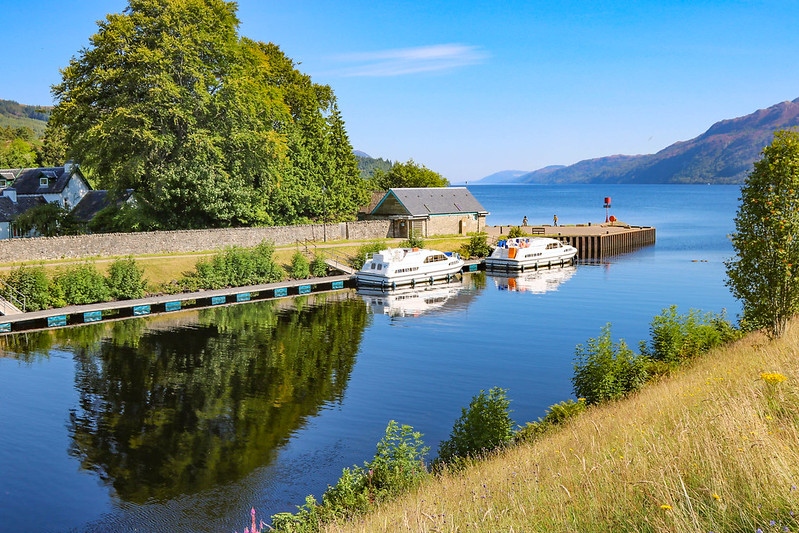
Is Loch Ness the deepest lake in the world?
No, Loch Ness is not the deepest lake in the world. It is the largest body of fresh water in the United Kingdom, but it is not even among the top ten deepest lakes in the world.
Lake Baikal in Russia is currently regarded as the deepest lake on earth, with a maximum depth of 5,387 feet.
How was Loch Ness formed
Loch Ness was created by the Great Glen fault in the last Ice Age. The Great Glen fault is more than 100 km long and runs through Scotland from Fort William to Inverness.
More tips about Scotland you might like
- Loch Ness: 3 best ways to get from Edinburgh to Loch Ness
- Scotland road trip: The perfect Scotland itinerary 7 days
- Edinburgh: How to spend a day in Edinburgh Itinerary [2023]
- Edinburgh Festivals: A first timer’s guide to Edinburgh Festivals in August
- Isle of Skye: Isle of Skye: 8 amazing experiences
- Scottish Highlands: 3-day Scottish Highlands tour with Heart of Scotland
- 10 best tours from Edinburgh to Loch Ness

